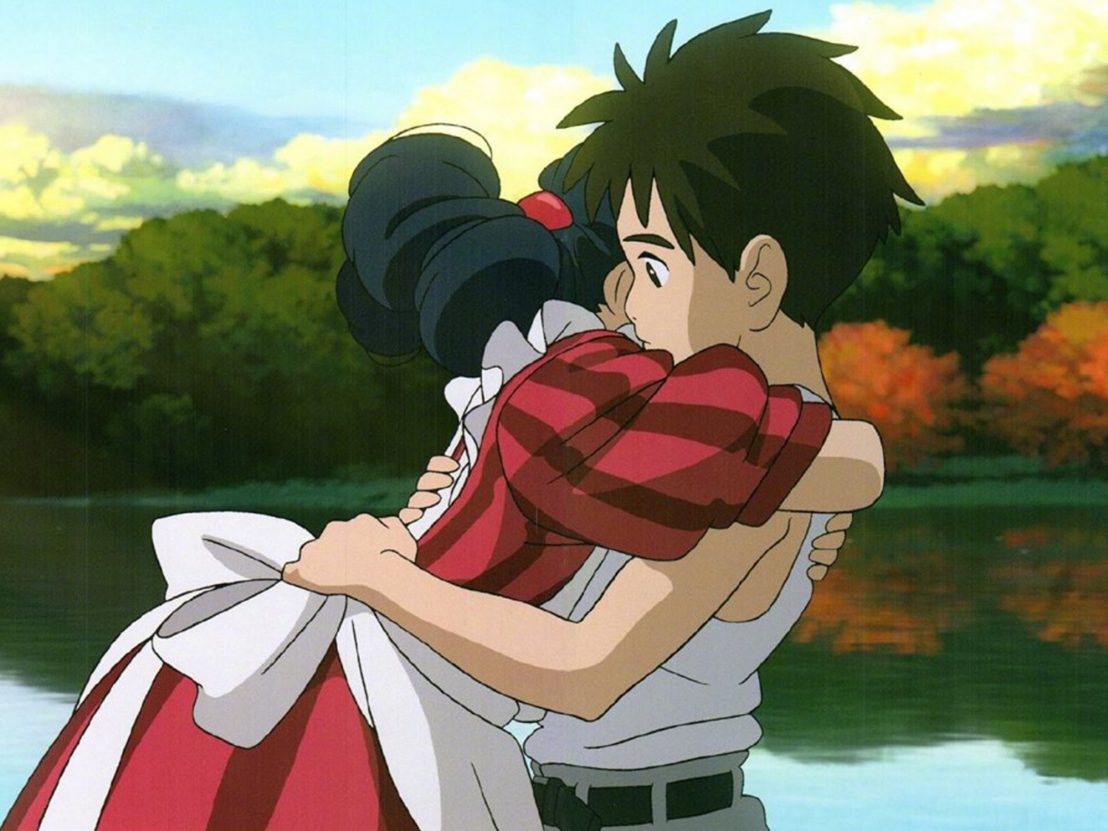
Less a swansong and more a heronsong from the Japanese maestro Hayao Miyazaki, a mystical and ambitious message of hope for the future.
The Boy and the Heron may or may not be Hayao Miyazaki’s last film. The 82-year-old Studio Ghibli head previously announced his retirement after completing Princess Mononoke in 1997, Spirited Away in 2001, and The Wind Rises in 2013. But here at the Toronto International Film Festival, a colleague announced that the great man is hard at work on new projects – but it sure feels like the end of something.
The Boy and the Heron is richly self-synthesising and achingly sentimental, collating artistic motifs from across the Miyazaki filmography and nakedly articulating the hopes it places in the next generation.
The begins with a World War Two bombing raid over Tokyo, in which young Mahito witnesses the death of his mother in an uncharacteristically stylised sequence making unprecedented-for-Miyazaki use of slow motion and point-of-view shots – exciting new techniques in a film whose look then becomes notably retro.
Miyazaki movies make you feel the wind on your face: a prototypical background in one of his films is a field in which each individual swaying blade of grass is literally animated, brought to life, by an unseen force, by the movement of the wind, or the pen of the artist, or the will of God. So the first 40 or so minutes of The Boy and the Heron are radical in their stillness, a return to the hand-painted backdrops and relatively limited movement of Ghibli’s pre-digital era. Exteriors, especially, are rendered entirely in gorgeous delicate Impressionist greens.
Mahito and his father, like the parent and children in My Neighbour Totoro, are a fractured family who move to the country to be made whole again; in this case, father Soichi (an armaments manufacturer, as Miyazaki’s own father was) will wed his late wife’s younger sister, and move into her family’s estate, staffed by a phalanx of bent-backed benevolent crones. But on the grounds of the estate is a mysterious stone tower, turreted at the top like a witch’s hat, which is the roosting place of a heron who takes a curious interest in Mahito. Flying close by the boy, it perches outside his window, appearing in his dreams to taunt him and implies that his mother is still alive. The heron almost seems to have another face inside its beak, as well as a broad, toothy, earthy laugh that jibes strangely with the graceful thud of his wings in full flight.
Beings in Miyazaki films are often changeable, drawn with shifting outlines and characterised with shifting moralities and motivations. His plotting is likewise flexible, perhaps never moreso than here – the rules of the film’s world are tough to define, making The Boy and the Heron quite hard to completely take in on a first pass. But even this flux befits an artist who has so frequently focused on stories of adolescence, coming-of-age—of becoming.
As in Twin Peaks, in which the owls are not what they seem, the heron is a hint that there exists a doubled world, into which Mahito must venture to restore family. The young hero’s journey, with its obstacles and perils, its guides and helpers, reads in summary like a compendium of Miyazaki’s careerlong interest in Western fairy tales, with elements echoing Charles Perrault and the Brothers Grimm, as well as Greek mythology and CS Lewis.
And now the visual style teems, as in the similarly plotted Spirited Away, with supernatural creatures and waves of beasts streaming around Mahito like individual droplets of water—a particularly highlight is a menacing flock of parakeets, with their chests puffed out like a general’s.
The original Japanese title of The Boy and the Heron translates as How Do You Live?, after a 1937 novel, a primer for young adults structured as a back-and-forth between a promising 15-year-old boy and the worldly uncle who mentors him and shapes his worldview. Mahito’s journey to the centre of a crumbling underworld is, essentially, an apprenticeship, never moreso than when he finally arrives at the foot of the aging magus who created the world Mahito will, perhaps, inherit—the one who makes the wind blow through the grass, nature or the artist or God.
In dreams begin responsibilities. His instructions to Mahito are heavy with the tearful hope of every aging artisan: that his mentee will imagine more wildly, will strive more doggedly, will somehow complete the work that the older man must, as he now knows, leave unfinished.
Published 9 Sep 2023